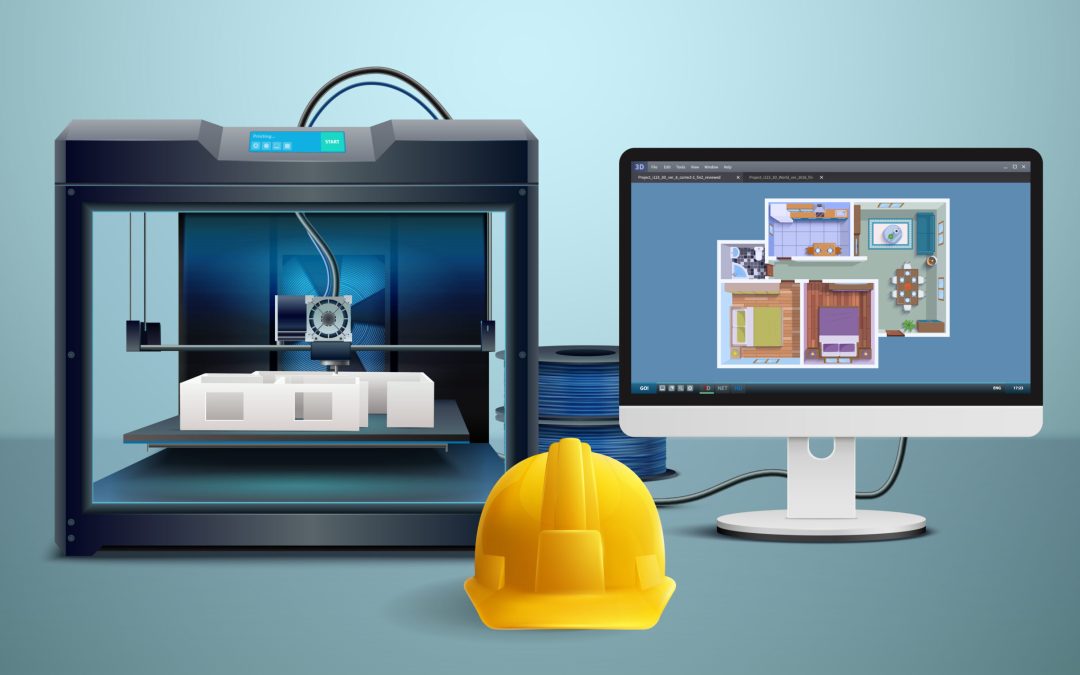Definition
Additive manufacturing, more commonly referred to by its subsets of 3D printing and rapid prototyping, has taken the industry by storm. Simply defined, additive manufacturing literally ‘adds’ material layer by layer to produce parts or assemblies with the aid of specialized software. Contemporary 3D printers used in industries such as aerospace can manufacture full-scale shells for rockets, an absurdly impressive feat considering the effort that otherwise would go into machining would be exponentially higher.
Background: The rise in popularity of additive manufacturing
Even though additive manufacturing has been around for decades, it has only received ample interest in recent times. The leading reasons for the current prosperity of additive manufacturing are based on solving modern dilemmas.
- Sustainability
The ever-increasing concern for the environment has led to critical scrutiny around additional wastage of material in manufacturing industries, something that most additive manufacturing techniques are excellent at minimizing.
- Speed
Designs oriented around organic and natural modeling that would be complex to manufacture using conventional methods can be made much faster and with ease due to the nature of additive manufacturing.
- Cost efficiency
Printing parts layer by layer treats the production of these parts in 2D rather than 3D, reducing the space and time complexity of the problem. Manufacturing via additive methods has presented a new frontier in the ever-growing industry 4.0 and will be vital in the coming decades.
Common Methods for additive manufacturing
Additive manufacturing employs various methodologies that can be assimilated into a company’s manufacturing flow depending on their requirements. These methodologies can be split into three broad categories:
Sintering
Sintering works on the basis of the applied material being heated to the degree that they become malleable without being liquefied. Once malleable, the material is layered according to the G-code given to the machine. Fused Deposition Modelling (FDM) is one such example of the sintering process, which is mainly used in the domain of plastic materials.
Melt Sintering
The second broad category covers the form of sintering where the material is completely melted and then layered on top of each other. Direct Laser Sintering utilizes lasers to melt the metal powder and deposit them in the shape of the model.
Stereolithography (SLA)
Based on photo polymerization, stereolithography functions via the use of ultraviolet light being focused on a tray or vat filled with liquid resin. With each span of light focused on the material, the resin dries up and forms an individual layer. The level of accuracy in SLA is significantly higher in comparison to other methods.
Additive manufacturing machines used at Devomech Solutions
Teams at Devomech Solutions heavily rely on additive manufacturing for our frequent testing process. We’ve been designing clients’ products for mass production, but with the ease of additive manufacturing. Once the product goes through the design phase, we run it through multiple iterations to get the best version of the product envisioned. The printing and testing phase helps us make sure that our client is fully satisfied by the design as well as the final product. The following techniques can be used to fully optimize the design before it is ready for mass manufacturing:
Prusa MK3S
Prusa is for sure a world-leading brand, especially when talking about 3d printers. Teams at Devomech Solutions use Original Prusa MK3S printers for manufacturing designs that require detailing, precision, and fine print. These printers are a good choice as they have a very low failure rate. They are a perfect choice for beginners as they do not just offer advanced features but also have intuitive features that make them very user-friendly.
Creality CRS10
What makes Creality CRS10 unique is the large printing space. Engineers working at Devomech Solutions choose Creality CRS10 Pro printers when they need to print bigger parts with accuracy. It is also a world-leading brand in the niche of fused deposition modeling.
Anycubic Photon S
Anycubic Photon S, a resin printer is frequently used by the teams at Devomech Solutions to print smaller parts that require highly precise tolerance. It captures even the smallest design features with desired surface finish which makes it the go-to machine to print complex parts with minute detailing.
The future of additive manufacturing
Additive manufacturing presents resounding optimism as a fast prototyping methodology. As the world faces dire issues in regards to environmental pollution, unnecessary wastage produced by conventional machining will eventually have to be either replaced or improved upon. Furthermore, access to most additive manufacturing technology is exceptionally easy for the average consumer, making it generally popular as well. This increase in popularity and the benefit of being environmentally friendly indicate that additive manufacturing is the next operating model when it comes to manufacturing and will only continue to grow in demand.

